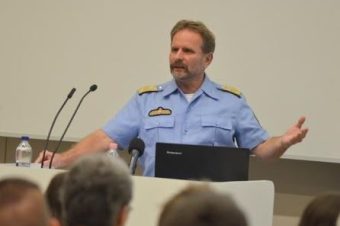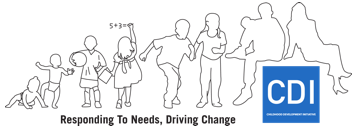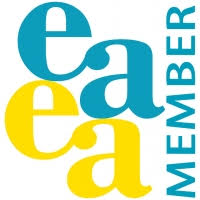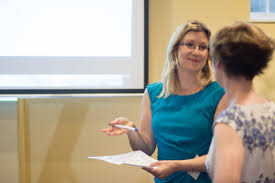The idea started over a coffee one summer afternoon in the Phoenix Park when Catherine and I decided that we needed to learn more about prison education abroad. And Sweden was our choice. Catherine was in touch with Linda Ahl in Sweden, as both were teaching and researching Mathematics in prison education and Linda had extended an invitation. We had heard many good things about Swedish prisons.
The following academic year we applied through our employer, City of Dublin Education Training Board, to Léargas (National Agency for Erasmus+ in Adult Education https://www.leargas.ie) and were granted funding.
We planned to go for a week in June to job shadow teachers in prisons. Linda was an amazing host. She was our advisor, director, driver, translator, mentor and organiser of prison visits.
Örebro
Our destination was the University City of Örebro which is about 200km west of Stockholm. Örebro was an ideal base as there is a cluster of prisons located in its surrounding hinterlands. Örebro is the seventh largest city in Sweden and is dominated by its medieval castle and the River Svartan that flows through it. It was beautiful and had a very relaxed atmosphere, where people cycled and rambled in the balmy summer evenings. Wild lupins of various shades of pink, purple and white grew on the banks of the river.
On Sunday Linda collected us and we drove through the picturesque Swedish countryside of red timber houses, flat green luscious fields to the lovely lakeside restaurant of Skogren. Here we were introduced to some of our fellow prison teachers who would be our guides in the coming week. Each teacher was polite and friendly and intrigued by our interest to visit them. Their English was perfect and we had an evening of good banter discussing both our prison education systems. We learnt the following interesting facts…
Sweden has about 70 prisons scattered across the country. Some are so small they hold less than 10 Prisoners. We found out that Swedish prison teachers are hired by the Department of Justice and not the Department of Education like us. They work a 40 hour week and have an 8.30am start. Each teacher is assigned approximately 15 students about half of which are located in different prisons and they liaise with these students through long distance learning. The 40 hour week is therefore made up of 20 hours face to face tuition and the other 20 hours is made up of tutoring long distance students through email and telephone consultations. They deliver secondary school curriculum is delivered and students can avail of up to 130 different subjects. We were fascinated to see this model at work.
Prison Visits
On Monday morning we arrived at Kumla Prison with Linda. Its thick, high walls denoted its maximum security status as one of three high security prisons in Sweden.
We arrived in the school staff room after a long walk, into a bright room, with a wide table, bookshelves,, Ikea blinds, potted plants and a smell of coffee wafting through the air. This was one of the two school staff rooms that are located in Kumla. The atmosphere was warm and cosy and we were introduced to the teaching staff and shared the chocolate we had brought from Ireland. Everyone was polite and graciously gave up their time to meet and greet us. Kumla has two identical education units because the prison is so large. About six teachers work between the two.
The School or LarCentrum (Swedish for Learning Centre) is a large area, with computers in each hub, where students can study in private. What we thought was particularly nice though was that the school had a little kitchenette that allows the lads to make coffee. We learnt that Swedes drink as much coffee as we drink tea.
The computers were large screened and all excellent quality. There were a few students sitting in their own cubicles, one reading, one or two tapping away on a keyboard and another sitting with a tutor at a screen. Each teacher is assigned students to mentor and help in the student’s chosen subjects, like History, Maths, English, and Swedish. They are a bit like our Open University advisers. Each teacher also gives time to long distance tutoring students from other prisons in their own subject area.
Over coffee in the staff room Hanna explained that there is a shortage of teachers in Sweden in general and in prison education in particular. The shortage was particularly critical in the areas of Swedish literacy and English. Universities are obliged to take ex-prisoners if they make the grade.
The creative arts such as art, music and crafts are delivered by outside agencies and not done through the school, like pre-release and parenting courses.
On Tuesday we travelled to Vasteras to Tillberga Prison low security prison. It holds mainly Class C category offenders and is also known as a “factory prison”. It makes those large timber houses we’d seen on our trip to lakeside restaurant. Tillberga was a contrast from the high security Kumla Prison. There were landscaped gardens, a wishing well in the middle of little mound and benches where prisoners could sit in the open air. Three teachers are based there. The class room looked like any typical classroom, with a whiteboard and a large table with seven or eight chairs.
We sat in on Linda’s Maths class. As eight students only are allowed to attend the Learning Unit, demand is high. The lads were enthusiastic students; cheery, engaged and attentive. She wrote a Maths problem on the whiteboard and let the lads work out the solution. Competition was fierce, who would be the first to come up with the answer. They busily scribbled answers and then scratched them out, whispering and conferring. Think, Linda said, if you subtract this number and divide it by three. Her lads were focussed on the problem. Now this was more like prison education as we know it. Class room dynamics, peer on peer interaction, discussion, banter. The room was buzzing.
We next visited Hallby another high security prison. For this journey we took a coach and then a bus. In the fields on either side of us lay Viking burial moulds and between those sprang beautiful wild pink and white lupines everywhere. Hallby Prison was built 1958 originally as a youth detention centre. The school was bright and airy. There were two classrooms and an open learning facility full of computers at the end. Posters and art adorned the wall. Prisoners were playing their guitars and chatted.
Our last prison to visit was Hinsberg Women’s Prison located. The high-security prison is housed in a mansion set among tree-lined avenues, with a view of a sparkling lake. It is known to staff and inmates as “the castle” and it was a sylvan paradise. Nestling nearby are bungalows housing most of the prisoners. Hinseberg has a sauna, solarium, massage room and a horse riding paddock.
We met the staff who have been there for many years. Each woman we met loved the school and engaged fully and wholeheartedly in their education. Swedish and English literacy were of primary importance to them. They wanted to learn and educate themselves and make a go of their lives. Their energy was infectious. The school was in a beautiful sun soaked location within the mansion. It was such a positive place and it definitely left an impression on us.
Reflections
We learnt that the Swedish model of teaching is of a high calibre and run by a team of dedicated and hardworking teachers. It takes a dual approach of distance learning coupled with a focus on individual study, similar to our Open Learning model. It lends a flexibility to learning; students can pick up their studies again if transferred and this continuity. We also remember the lively interaction in Linda’s Maths class.
The Swedish model has an academic focused, and creative arts are taught by other agencies unlike Irish Prisons where music, art, pottery, fabric, mosaic, woodwork classes are taught alongside academic classes.
The Head Teacher is head of six prisons and is based in the Department of Justice in Örebro. This gives the teachers a sense of independence and a feeling that they are trusted to run the school with competence and efficiency. In Ireland one Head Teacher is based in each prison school.
We both found it a powerful learning experience and realised that we have more in common with our Swedish colleagues than differences. There was a poster on the school wall in Kumla.
“As I walked out the door toward the gate that would lead to my freedom, I knew if I didn’t leave my bitterness and hatred behind, I’d still be in prison”
Nelson Mandela.
Our objectives and goals are exactly the same: to build self-esteem and love of learning
to help them to leave negative learning experiences behind.


![Alaaf prison – Alaaf is the carnival cheer in Cologne [EN/GE]](https://www.epea.org/wp-content/uploads/alaas-340x226.jpg)

